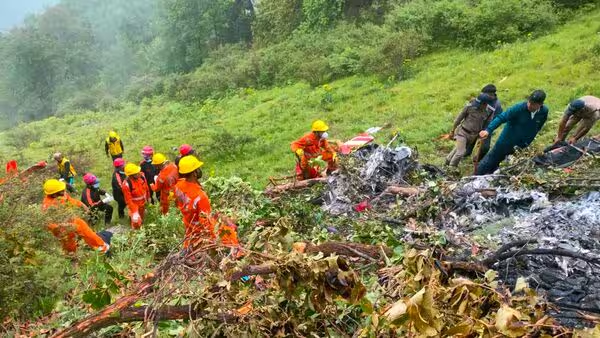Israeli fighter pilot discusses targeting Iran’s ballistic missile launchers
📍 Mapping the Airstrikes
- Israel’s multi‑wave air campaign began around June 13, hitting at least 100 sites across Iran—over 200 fighter jets, including targets like Natanz and Isfahan, nuclear facilities, missile sites, military bases, energy infrastructure, petroleum storage, and Tehran’s state TV studio reuters.com+7en.wikipedia.org+7washingtonpost.com+7.
- The graphic pinpoints these locations geographically, showing clusters near Tehran, Natanz, Isfahan, and Tabriz, illustrating the layered nature of the strikes targeting both strategic and nuclear sites.
Human and Material Toll
- Iran’s health ministry reports at least 224 deaths (likely many civilian) and 1,000+ injured across multiple provinces en.wikipedia.org+1en.wikipedia.org+1.
- The IAEA confirms destruction at two centrifuge assembly complexes near Tehran and severe damage at Natanz’s pilot enrichment plant en.wikipedia.org+12reuters.com+12timesofindia.indiatimes.com+12.
- Despite deep damage to Natanz, Iran maintains uranium enrichment at 60% at Fordow, its heavily fortified underground facility apnews.com+2reuters.com+2washingtonpost.com+2.
Iranian Response
- Iran retaliated with a volley of 400+ missiles and drones, some breaching the Iron Dome, targeting Tel Aviv and broader central Israel washingtonpost.com+1apnews.com+1.
- Tehran claims it regained control of its airspace and executed retaliatory strikes against Israeli targets, striking down several Israeli aircraft .
Leadership Targets
- Reports suggest Israel killed key figures, including top military-intel commanders like Ali Shadmani theguardian.com+1thetimes.co.uk+1.
- Iran’s Supreme Leader Khamenei strongly rejected calls for surrender and warned that U.S. intervention would bring “irreparable damage” apnews.com+1apnews.com+1.
Regional & Global Fallout
- Oil prices spiked, European airlines reconsidered Iranian routes, and countries issued widespread travel warnings .
- Governments from China, EU nations, to Middle Eastern regional powers called for de-escalation en.wikipedia.org.
- In Washington, Trump demanded Iran’s “unconditional surrender”, while the U.S. repositioned forces and contemplated broader involvement en.wikipedia.org+3theguardian.com+3apnews.com+3.
🛡️ Interpretation Highlights
- Strategic aim: Israel’s strikes appear aimed at significantly degrading Iran’s nuclear infrastructure and missile capabilities—though Iran’s defense capacity, notably Fordow, remains operational.
- Escalatory pressure: Iran’s robust missile response and explicit threats (e.g., closing Strait of Hormuz, hitting U.S. bases in Iraq) raise alarm over expanded confrontation reuters.com+2washingtonpost.com+2timesofindia.indiatimes.com+2apnews.com+1nypost.com+1.
- Civilian risk: Heavy civilian casualties and infrastructure damage fuel concerns of possible war crimes—international legal analysts caution these strikes may violate the Geneva Conventions .
The best Shop Online For all Items Click Here
See Best Diamonds In Instagram Follow
Watch this Video newest in politics Watch Now




